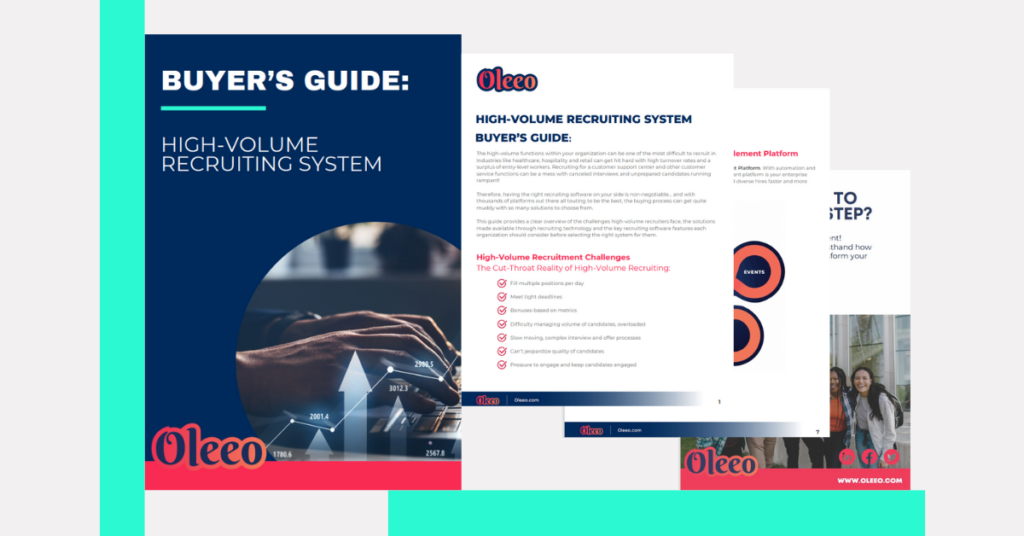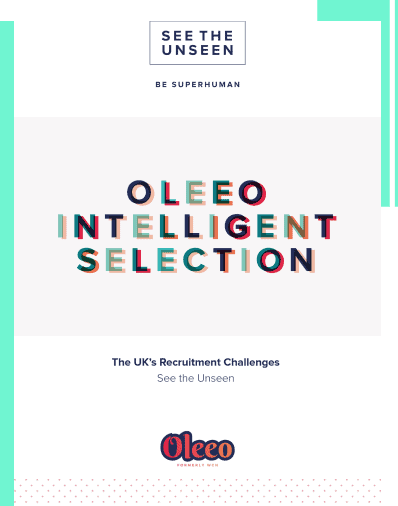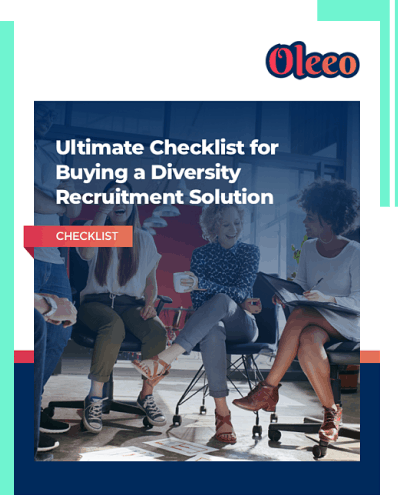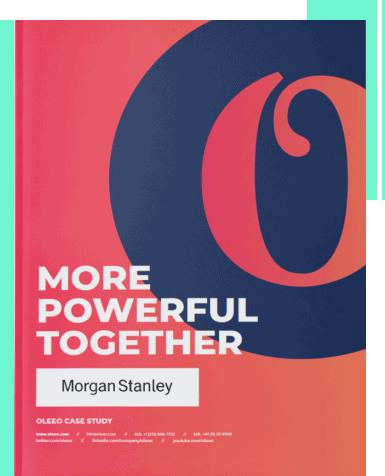Once you’ve determined which kind of events are right for you, it’s time to make it incredible. These emerging trends for before, during and after the events will help you rise above the competition and make events one of your primary recruiting channels.
Before the Event
Trend #1: Engage Recruiting Event Attendees via Text Recruiting
According to Trumpia, 97% of text messages are opened and millennials usually send 67 text messages per day. Undercover Recruiter found that 89% of job seekers believe that a mobile device can be critical to your job search as a tool with 45% of people searching daily. Nexxt discovered 68% of millennials, 73% of Gen Xers and 75% of baby boomers said they are willing to receive a job opportunity over text.
Today’s candidates want you to text them. Texting is a fantastic way to remind job seekers of your events, help them know what to bring, answer questions about what the event will entail and to engage and nurture them once they’ve walked out the door. While email addresses might change with a new job and home phones rarely get answered, texts are undeniably read and responded to.
Even better than using SMS within your recruitment and event strategy? Use one that integrates with your ATS or CRM. There are tons of platforms now that will allow you to automatically manage multiple texts from candidates, write out standard answers to FAQs and add to a candidate record if a phone number changes.
Trend #2: Email Automation
The use of automated marketing is an effective way to spread the word about an upcoming recruiting event. 40% of event marketers believe that email automation is the best outlet when promoting an event. Having an automated channel allows your recruiting team to be more prepared for the event with less work. Candidate engagement and logistics are managed on cruise control. Your firm can also track metrics such as open rate and if they followed a link within the email in an attempt to predict whether they are going to attend your event or not.
Trend #3: Use of Online Platforms (Social Media and Career Sites)
LinkedIn researchers found only 30% of possible employees are actively searching for a job, which means CRM efforts must be expanded. Expansion of your program can reach current, past and potential future candidates. Using tactics like text recruiting, email automation and Internet based platforms can coax passive candidates into attending your event. In fact, SHRM found that 82% of companies use social media to attract these passive candidates.
94% of companies use social media to network before their events and post job listings. Furthermore, 59% of employees said they were attracted to that company because of its social media presence. Promoting your employer brand via Snapchat and other social media networks has become increasingly popular in terms of recruiting and distributing content. There are 173 million users worldwide with 3 billion snaps sent daily. Snapchat can be used to promote events, stream events and disseminate blogs and other information about your company. The sheer reach of social media alone has become an ideal form of promotion for your recruiting events.
Many companies use their career sites as well. Posting to event reminders or adding popups to these sites produces rich and engaging content to attract already interested individuals to your event.
Benefits: With 61 million Gen Zers entering the workforce, social media can help attract the future of your company. Gen Z enjoys having constant communication and instant answers for questions they have. In fact, 90% of candidates that are between the age of 18-29 are on social media, which makes promoting your event via social channels is ideal. Gen Zers want immediacy in communications. Therefore texting and communicating consistent messages and values via Twitter and other social media outlets can be beneficial for your company!
During the Event
Trend #1: Have a Mobile Application On Hand
Using an events mobile app, can help your talent acquisition team manage recruiting events on the go. According to the State of Mobile Event Technology Report, 91% of event planners have seen a positive return on investment from event apps. Gone are the days of the business card fishbowl. Today’s recruiting events offer mobile devices integrated with HR technology, so crucial pieces of information don’t get lost.
- If you have a link for participants to use on their phone, you have the information to retarget them. In addition, by giving candidates the ability to use their own device, companies can provide a stronger, more engaging experience for them.
- By entering their information at the event, your system can go to work matching and using predictive analytics right away, so you can identify top talent and accelerate them using a high touch experience.
- Having complete records of a candidate’s information allows you to tag them with special notes you might otherwise forget.
- Intuitive self-service tools can give candidates control and free up booth attendees to focus on conversations.
Did you know that SHRM found that 60% of applications are abandoned when they are filled out on a mobile device? Avoid candidate attrition by offering quick and easy guidance through your process. Leverage social platforms as a way of speeding up the application process. Break your application process into smaller, bite size chunks for a more mobile-friendly experience and greater candidate engagement.
Another bonus for busy recruiters is by having candidates place their information into an app, they can easily sift through the hundreds of applications they’re likely to receive at an event much faster than manually sifting through resumes, CVs or business cards. AI tools can also help focus recruiters’ attention on top talent first.
Glassdoor found that 69% of active job seekers are likely to apply to a job if the employer actively manages its employer brand. The tools and solutions you use are a direct reflection of your company, your brand and even your culture. Integrating intelligence-based recruitment is a surefire way to make your process easier and see the best results when it comes to recruiting and hiring that new talent.
Trend #2: Candidate Segmentation
Researchers have found 86% of HR professionals believe recruiting has turned into recruitment marketing. Much like creating customer personas, companies must begin making candidate personas to help with candidate segmentation. As with any hiring initiative, implementing a recruiting event strategy requires a deep understanding of the unique candidates you will be meeting. Whether you’re targeting a diverse segment, a specific veteran group or college students, it’s crucial you have an idea of the values they hold and the messaging that will resonate best with them. Additionally, you should have an idea of how they want to communicate with your recruitment team.
Candidate Segmentation Steps
1. Identify the key individuals and groups that you will be interacting with who have the skills you want to acquire.
2. Build a profile or persona of your current employees and top candidates to use as a guide in messaging.
Hint: Using your top performers will make this a more discerning baseline!
3. Research challenges and learn the barriers of the specific group and address these with company policies and messaging. This could mean adjusting how you communicate benefits, photos on career sites or which company programs you highlight.
4. Build relationships with individuals and groups that represent the candidate segment to better understand what resonates with them. While you may not always hire these people right away, they can be great resources to understand where your messaging is right on target and which elements should be changed or eliminated altogether.
5. Develop partnerships through your firm to benefit specifically targeted talent pools to show candidates your firm’s support. Whether you decide to underwrite a specific scholarship or sponsor a series of events the group is holding, ensure you speak with them about what this alignment means and how you anticipate being involved.
6. Eliminate or minimize barriers that may prevent your candidate segment from applying to the position. For example, if you’re targeting working mothers in an industrial area, check to ensure public transportation is available, focus on local school schedules and alter shifts if they conflict with either or your target talent pool will potentially feel unsafe. If you cannot alter schedules, consider providing safe transportation or a childcare subsidy.
7. Offer specific services and resources that align with the issues and interests of the candidate segments. In the example above, a company shuttle for late-night workers, or subsidizing a local after school program could be the difference between an engaged and loyal workforce and severe turnover and retention issues.
Identify prominent trends in the segmentations you’re targeting, then address how your company solves for these within your recruitment messaging and include these in follow ups to attendees. From there, you can select where to attend or host your candidates.
Trend #3: Integrate Augmented & Virtual Reality
By next year, there will be 171 million virtual reality users. With that many users, implementing this technology at your events is a must. Virtual reality (VR) and augmented reality (AR) are technologies that have been applied to everything from video games to real estate, so it’s no wonder the recruiting industry has started adapting their own uses. These two forms of digital experience can both garner interest in your upcoming event and enhance the candidate experience and your employer branding during.
For example, creating a VR tour of your company’s offices will help potential applicants place themselves in the environment they might work in. It is a great way to sho your candidates a virtual tour and also a day in the life of employees at your company.
Companies are also using AR and VR technology to impart meaningful employment to future employees. In many cases, it’s hard to show the impact of work within a cafeteria or hotel (where many events are held), but if an agricultural giant can show how modified crops are helping to feed those in need or a mutual fund can “offer a tour” through the high-tech investments they support, prospects are more likely to understand how their work will impact the world around them.
This technology can also help career event attendees see company benefits like corporate philanthropy initiatives, what work from home looks like or meet with their future colleagues across the globe!
Because AR can use mobile location technology, it is a great tool for day-of attendees. For instance, your team can build a geolocation social app filter for an in house event which will allow attendees to share their experience with followers in an engaging way. Or, even an interactive map can help candidates easily find your location within the event space.
Trend #4: Social Media at the Event
Social media can be used at all stages of recruiting events. With 92% of companies tweeting at least once per day, Twitter has become a great way to advertise and promote. 68% of adults use Facebook, making it the most popular social media platform by far, with Instagram second at 21%. How can you use these platforms at the event?
- Facebook and now Instagram allow you to livestream video, so streaming speakers or contests at your event can help generate attention to your booth and social media channels.
- Creating a catchy hashtag can help boost awareness and engagement during the event as well which can then be used across Twitter, Facebook, Instagram and even LinkedIn.
- If you are promoting a sweepstakes contest or giveaway at your booth, you can announce your winners via social media during the event or let attendees know how they can enter.
- You can utilize Snapchat by creating and sponsoring specific geofilter for attendees to use and share at the event.
After the Event
Trend #1: The Use of Your ATS and/or CRM
Applicant Tracking Systems (ATS) and Candidate Relationship Management (CRM) systems are frequently used by recruiting teams. The difference between ATS and CRM includes an ATS’s ability to track submissions of those who have applied and a CRM services the relationship between the company and the applicant. According to Capterra, 75% of large companies use an ATS, therefore this is an extremely popular trend. However, effectively tracking candidates with an ATS is the problem. If used correctly, these systems can save a company thousands and thousands of dollars! For example, a company with eight people can save $10,000 and it only increases when the companies get bigger. ATS software is capable of providing the user experience needed to keep candidates engaged after the event as ended. Maintaining constant communication will also help your talent pipeline and eventually your workforce!
Trend #2: Automate Your Follow-Up
Trends important in the “Before the Event” stage can also be implemented when the events are over.
Text Messages: Texting is a great way to keep in touch with your candidates. In fact, with 81% of adults texting regularly, any form of outreach via their smartphones is a great tactic. Some questions you can ask can be about their experience at the event, if they had any further questions or if their opinion of your company has changed after the event. Using text messaging to follow up after the event also makes your event more personal and capitalizes on one of the key things you need in today’s candidate driven market – speed!
Imagine having a wonderful hiring event on Friday and calling and emailing throughout the following week to try to schedule an interview, just to find out your dream candidate accepted a job elsewhere. Instead, you can send an SMS Monday morning to schedule an interview and be his or her next employer in days. Texting not only optimizes your recruiting event spend, it allows you to cut your time to hire significantly, saving you internal resources as well.
Social media: Social media such as Twitter and Facebook can be used to post information about what candidates need to do after the event. Companies are also using it to field questions candidates have about an interview question or where to find information.
Email: Email automation is another highly effective and popular medium companies use to remind candidates of steps they need to take about the application process.
Trend #3: Measuring Data and Metrics From Your Event
The use of applications and on-site software can allow you to collect data and analyze it for future events. From the data based on attendance and applicatio submissions (to name a few), you can determine ROI, turnover rate, interviews per hire at each event, how many application submissions you receive per event and the cost per hire. Taking this all into consideration can help you measure the success of your last event campaign and plan for your next one so your not wasting precious recruiter time.
Using these trends, it’s time to evaluate your own recruitment program and the areas that could be improved upon. A few questions to ponder include:
1. Where are you looking?
2. Do you prefer a smaller in house event or larger campus event?
3. How can you make high volume hiring events more effective?
4. What tools do you use at your events?
5. What kind of data do you collect from your candidates?
6. How often do you follow up with candidates?
7. What tools do you use to follow-up with your candidates?
8. How important is maintaining a relationship with your candidate after an event?





















